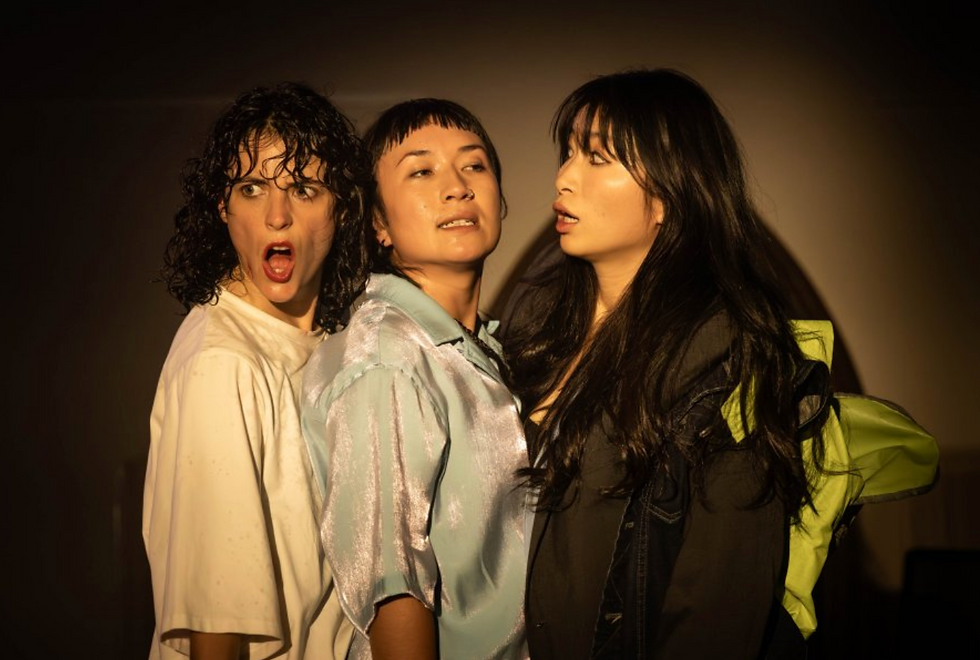Review: Adrift at La Mama HQ
- Theatre Travels

- May 26, 2023
- 3 min read
Review by Thomas Gregory
Long before TikTok and Instagram stories, modern society decided it wanted more bite-sized moments of entertainment and was even happy to binge an hour or more’s worth in a single sitting. Through the last decades, we saw Mamet’s Vermont Sketches, Coen’s Almost an Evening, and Cariani’s Almost Maine. In film, we saw Pulp Fiction, Love Actually and Paris, Je’Taime, while prose saw works such as Winton’s The Turning.
Adrift, the latest production by writer/director team Jane Miller and Beng Oh, is yet another addition to the genre, offering many relatable and some less relatable scenes as slices of modern Australiana. While most of the scenes are comedic, highlighting the absurdity of our lives and relationships, occasionally, a moment of tragedy or drama reminds us that sometimes life gets serious.
Miller’s script contains some of the best of Melbourne’s writing scenes, and most audiences will have a good chuckle at the baker who wants to overthrow society or the couple who wants to use a discounted ticket at the cinema with no proof of concession. My personal favourites were those featuring an older couple, their mixmaster, and the mysterious holes in the backyard.
However, Adrift often, well, drifts, and not in the way it was intended to be. Most of the scenes shown are connected to larger stories, but some are not, and it is difficult to know if a character on stage is someone new or old. This is only made more difficult by the doubling-up of actors, and their basic costume changes are not always enough. The opportunity for a single larger story of connected lives is wasted here, as the script attempts to have its cake and eat it too.
Some scenes are also not as compelling as others, with younger characters often being poorly portrayed, and one scene that touches on both depression and alcoholism being treated a little too flippantly. Likewise, while most scenes are filled with relatable moments of naturalism, there is the occasional one that “drifts” into absurdism or straight-up surrealism.
Overall, the script has enough laughs you can forgive its faults, and most people will walk out with two or three memories of great jokes.
The nine actors on stage throughout the night were brilliant, with no single member letting down the ensemble. Each also had strong chemistry with their scene partners, though sometimes the fast past of the script had some struggle with timing. Beng Oh was able to take each scene and frame it in new ways - while so many were dialogues, we were constantly placed in new settings simply through the arrangement of the actors and the very occasional introduction of a chair. When not part of the scene, actors would sit to the side, ready to jump in like you would see naturally in an improv show, and some early sketches had this group provide background noises that were characters in their own right.
The most confusing aspect of Adrift is the set design. The entire performance is provided on three raised stages, which the actors must carefully step across without falling between. While at first, I tried to find some thematic purpose to these stages (did two people on one stage mean something? Was the middle stage for the more reasonable character?), but halfway through, all theories were abandoned. By the night's end, I still had no idea why these actors had to take such physical risks and to what benefit.
The set design also included projections of photos related to the setting or theme of each sketch. These simple images were not necessary to understand where each scene was placed but certainly added to the overall aesthetic of the production.
There are several missteps in Adrift, but most audiences will easily be able to forgive them all. At the end of the night, you will remember all the laughs you had. You will take home the wild characters you met during the play and the relatable moments that make you feel a part of a community.

Image Supplied




